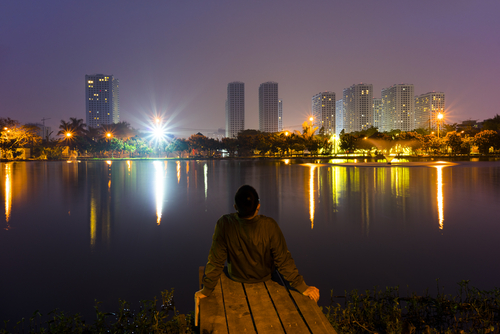Are Vietnam’s Diplomatic Successes Overshadowed by China?

Please note that we are not authorised to provide any investment advice. The content on this page is for information purposes only.
US–Vietnam military relations have improved remarkably in recent years but talk of an enhanced alliance between Washington and Hanoi overlooks important geopolitical and historic nuances. Defence relations between the two countries turned a page in the early 2000s, when both countries moved beyond the legacy of the Vietnam War. Both countries began to actively explore new ways to work together.
US–Vietnam military relations have improved remarkably in recent years but talk of an enhanced alliance between Washington and Hanoi overlooks important geopolitical and historic nuances. Defence relations between the two countries turned a page in the early 2000s, when both countries moved beyond the legacy of the Vietnam War. Both countries began to actively explore new ways to work together.
High-level US defence and military officials now visit Vietnam on a regular basis. In 2011, the two countries signed a memorandum of understanding to advance bilateral defence cooperation. In October 2014, the Obama administration announced the partial lifting of the ban on lethal weapons sale to Vietnam. This means that the United States will now sell lethal weapons to Vietnam on a case-by-case basis, a development almost unimaginable just a few years ago. With the partial lifting of the ban, the United States and Vietnam began laying the foundation for a bilateral defence procurement relationship, which is expected to take off in the next several years.
But several factors still beset the relationship.
China has always loomed large on Vietnam’s foreign policy decision-making and Hanoi has concerns about how Beijing may respond to the US–Vietnam military rapprochement.
Vietnam has emerged as a front-line state in ASEAN with a stake in maintaining maritime security and freedom of navigation in the Asia Pacific. While it welcomes the benefits heading its way from renewed US attention, Vietnam’s leaders are keenly aware that China views many elements of the US rebalance as a containment effort. Vietnam wants to avoid being caught between the two powers and many officials in Hanoi privately pointed to the situation in Ukraine as a consequence of an unbalanced foreign policy.
For every gradual step Vietnam takes to advance its security ties with the United States, it finds itself having to reassure Beijing.
The complex pattern of Sino–Vietnamese relations is clear from the oil rig incident of mid-2014, which resulted in the worst deterioration of ties in decades between China and Vietnam.
When dealing with China, Vietnam prefers to exhaust other options before invoking the help of outside parties. Following weeks of standoff, Hanoi and Beijing got to work patching up ties. But that did not stop Vietnam from filing a statement in late 2014 asking the Permanent Court of Arbitration in The Hague to consider its rights when evaluating the legal case between China and the Philippines. In response Beijing tried both to pacify and pressure Hanoi, wasting no time in dispatching a senior Politburo member. He proclaimed during his trip that Sino–Vietnamese ties should take a ‘correct path’ and denounced the use of ‘megaphone diplomacy’.
There is also discord surrounding US intentions in pushing for military cooperation and advancing defence relations with Vietnam. The conventional narrative put forth by US officials is that the United States is not interested in exploiting cracks in Vietnam’s foreign affairs for its own gain. But some quarters within the Vietnamese leadership are confounded by what they describe as the United States’ desire to move quickly in the area of defence cooperation.
Given their common strategic interests, both sides continue to try to identify a common denominator. Washington has become more comfortable with the patience needed to expand military links with Hanoi, while more progressive voices in Hanoi want to see greater cooperation with the United States in the years ahead.
But Vietnamese leaders are and will be nervous about getting into any kinds of commitment in the future. This mistrust is rooted primarily not in any history of conflict, but rather Hanoi’s interpretation of the history of great power involvement in Southeast Asia.
For instance, many in Vietnam see China’s seizure of the Paracel Islands in 1974 from then US-backed South Vietnam as a byproduct of the US drawdown of troops from the Vietnam War and rapprochement with China two years earlier. Similarly, the skirmish between China and Vietnam on Johnson South Reef in 1988 was a byproduct of early Soviet hints of withdrawal from Cam Ranh Bay and, once again, US acquiescence. This sentiment is not going to fade soon.
While Vietnam understands its vulnerabilities with respect to China, its leaders remain ambivalent about the US security umbrella in the region. This is manifest in the country’s ‘Three-No’s defence policy: no military alliances, no foreign military bases on Vietnamese territory, and no reliance on any country to combat others.
The US–Vietnam defence relationship does have a lot of potential and will likely receive a boost this year as the two countries celebrate the 20th anniversary of normalised diplomatic ties.
But there are some challenges that both sides will need to focus on in the immediate future, such as Hanoi’s insistence on the complete lifting of the ban on lethal weapons sales and desire to acquire US military hardware, Washington’s continuing calls for greater operational engagement between the two navies and increased annual access for US naval ships to Vietnamese ports.
But in the absence of a grand vision, the United States and Vietnam will settle for increasing cooperation and negotiations at a tactical level for the foreseeable future.
Vietnam’s careful dance with the superpowers is republished with permission from East Asia Forum




